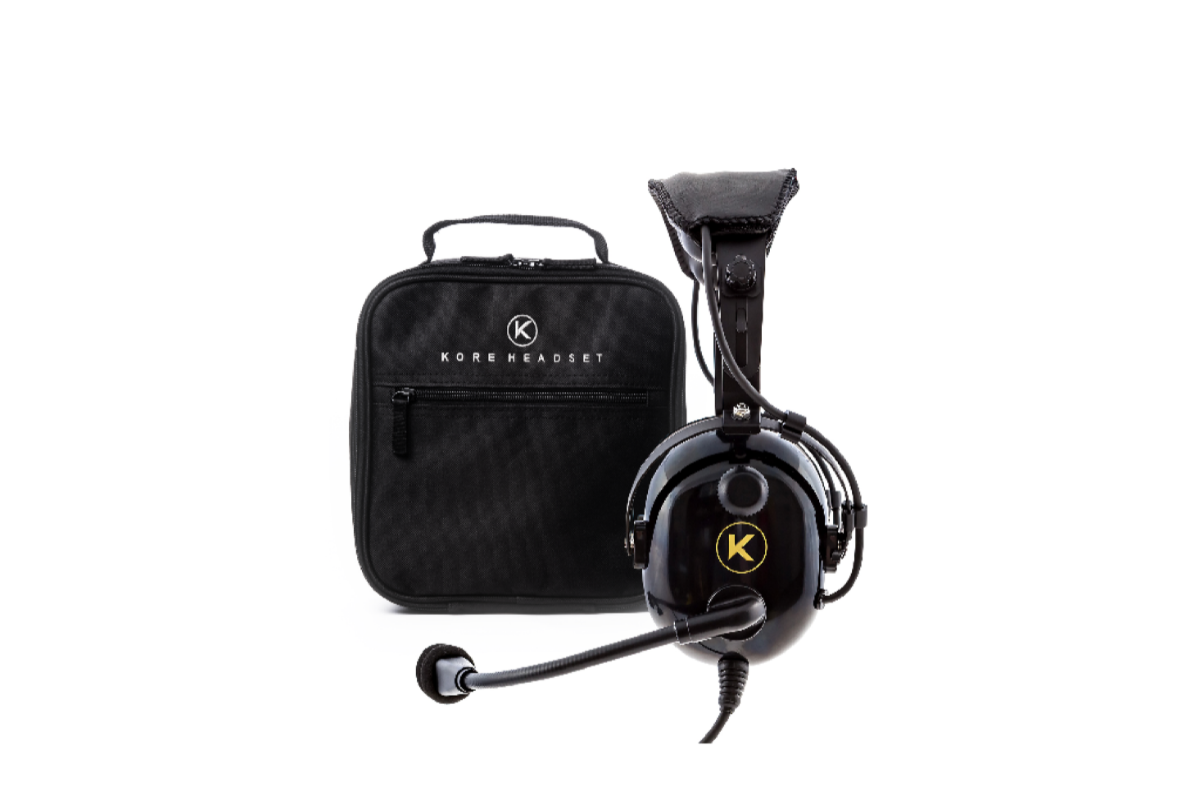
Kore Aviation - If you are training to fly, you may wonder PNR vs ANR, which is better for a student pilot? Right from the start, choosing the right headset can impact comfort, fatigue, communication clarity, and your budget.
This article unpacks PNR vs ANR technology, compares their strengths for students, and suggests good paths.
What Is PNR and What Is ANR?
1. PNR (Passive Noise Reduction)
PNR stands for Passive Noise Reduction. It uses physical insulation, thick foam, tight seals, dense ear cups, to block outside sound. No electronics, no batteries, just mechanical damping.
Because there are no active components, PNR headsets tend to be simpler, lighter, and more robust. Many student pilots start with PNR models.
2. ANR (Active Noise Reduction)
ANR stands for Active Noise Reduction (sometimes called active noise cancellation). These headsets include microphones that pick up ambient noise, a processor that inverts the audio waveform, and speakers that cancel out noise when added to the original.
ANR is especially good at reducing low‑frequency noise (engine rumble, propeller hum). But because it uses electronics, ANR headsets require power (battery or aircraft supply) and have more complex design.
Discover more: What is the Difference Between an Aviation Headset and a Normal Headset?
Side‑by‑Side Comparison
Here is a table to compare PNR vs ANR headset features and tradeoffs, with emphasis on what a student pilot cares about:
| Feature | PNR (Passive) | ANR (Active) |
|---|---|---|
| Power / Battery | No battery needed | Requires battery or aircraft power |
| Complexity | Simple, fewer parts to fail | More complex, electronics involved |
| Cost | Generally lower cost | Higher cost |
| Weight | Slightly heavier due to insulation | Can be lighter if well designed |
| Maintenance / Reliability | More reliable long term | Requires battery care and more components |
| Noise Reduction, especially low frequencies | Good but limited for deep engine hum | Stronger at reducing low frequencies |
| Best for student training | Excellent due to simplicity and reliability | May be overkill early on |
| Backup use | Always ready, no power worry | Need spare batteries or risk failure mid‑flight |
From that comparison, you can see why PNR vs ANR headset often leans in favor of PNR for beginners.
Also read: Which Aviation Headset Is Right for Beginner Student Pilots?
Why PNR Is Usually Better for Student Pilots
Here are the main reasons PNR is often a superior choice at the training stage:
-
No battery worries
You don’t need to monitor battery levels or risk power failure during flight. -
Lower initial cost
Student pilots often have limited budgets. PNR gives solid performance without the premium price. -
Durability and fewer points of failure
With no electronics, there is less that can break. -
Ease in maintenance
Cleaning, replacing cushions, or cables is simpler when there’s no internal electronics to worry about. -
Sufficient noise blocking in training aircraft
Most trainer aircraft (Cessna, Piper, etc.) are not extremely noisy. A good PNR performs well in those environments. -
Better backup and versatility
Later, you can still use your PNR as backup even after upgrading to ANR. -
Ruggedness & Less Electronics to Fail
With PNR, there is no risk of electronic malfunction mid‑lesson. No drained battery, no firmware issue. For early pilots who want to focus on flying, that reliability is a big plus. -
Lighter Weight & Less Drag on the Fit
Some ANR components add weight or change how the headset fits. For shorter flights, PNR might already offer enough noise blocking. If your cockpit (training airplane) is not extremely loud, PNR may be totally acceptable. -
Good Enough Noise Reduction for Training
In many training aircraft, engine noise is moderate. A well‑designed PNR headset can reduce enough ambient noise to make radio calls clear. It may suffice until you fly louder or longer flights.
PNR models have fewer electronic parts, maintenance is easier, there’s no battery to worry about, and lifespan tends to be high. If you begin your training with a well‑built PNR headset, you can focus on flying and communications first.
Explore Kore Aviation premium PNR and affordable headsets, designed for durability to stay sharp in the cockpit.
Suggested Approach for Student Pilots
- Start with a good PNR headset for reliable, affordable, and simple
- Fly enough hours, you'll sense when noise becomes a burden
- Keep the PNR as backup, electronics can fail but having a fallback ensures you’re not grounded
Scheduling your gear upgrade when you cross a threshold (say 200 or 500 hours) can balance cost vs benefit.
Tips for Getting the Most from PNR or ANR
- Ensure good seal & fit — even the best technology fails if the ear cups leak
- Noise reduction rating (NRR) — for PNR headsets, check the dB rating
- Battery awareness (for ANR) — carry spare batteries or check power sources
- Backup headset — always have a reliable backup, especially if flying IFR
- Try different models — comfort varies; test before committing
Discover More: Why Do Aviation Headsets Have Two Plugs?
FAQs (PNR vs ANR for Student Pilots)
-
Will PNR always be enough?
Not always. In lighter training aircraft it often is, but in louder or high‑speed flights, ANR may outperform. -
Does ANR eliminate all noise?
No. It targets certain frequency ranges (especially low) and combines with passive reduction. -
Can an ANR headset fail mid flight?
Yes, battery loss or component failure can degrade performance. That’s why having a backup PNR is wise. -
Do I lose value if I start with PNR and then switch to ANR?
Not necessarily. Your PNR headset can serve as backup or instructor headset later. -
Are there hybrid headsets (PNR + ANR)?
Yes, some headsets blend passive and active methods (called hybrid or DNR). But they tend to cost more. -
What happens if ANR battery dies mid‑flight?
You may lose noise cancelling but still have passive sealing. That risk is one reason PNR is safer for novices. -
Are PNR headsets heavier than ANR?
They can be somewhat heavier due to insulation, but well built designs manage weight well.
Final Thoughts
When comparing PNR vs ANR headset, the better choice for most student pilots is PNR. It delivers dependable performance without battery concerns, lower cost, and fewer points of failure, exactly what you want in your early flights. A PNR from a trusted brand like Kore Aviation gives you years of reliable use as you build flight time.
If and when your flying needs expand into longer, noisier environments, you can always consider ANR. But beginning with PNR gives you a solid foundation.
Ready to outfit yourself for training? Head over to Kore Aviation to see their PNR headset options and get gear that matches your pilot journey.

